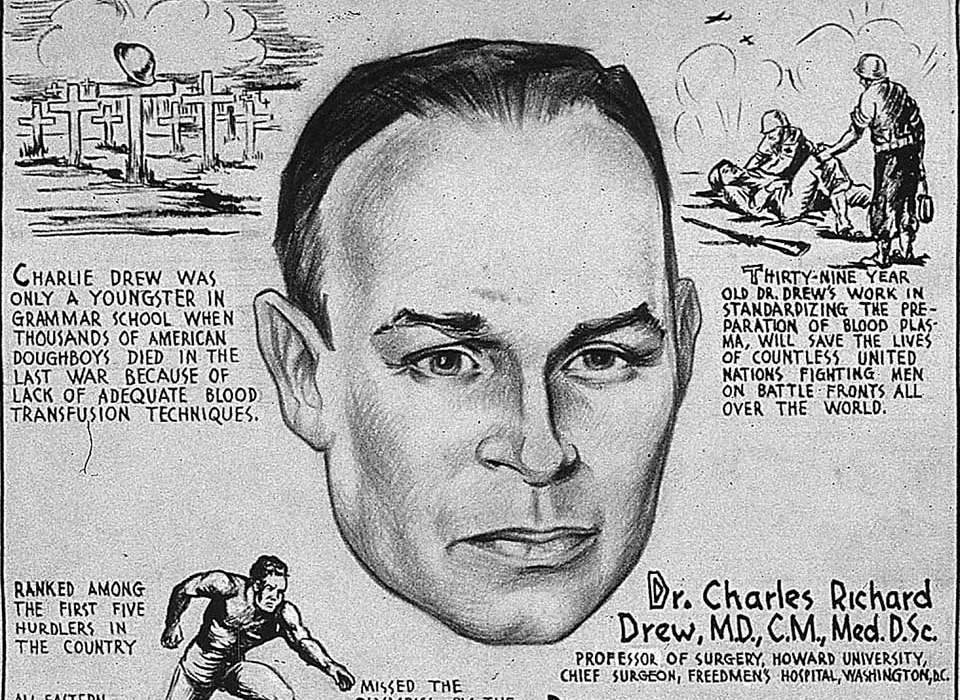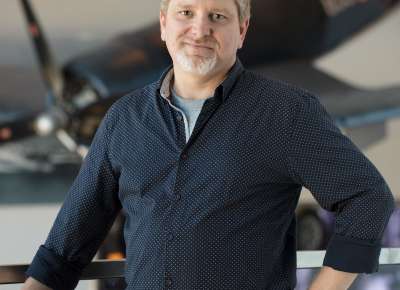At age 37, Charles Drew was at the height of his career, and yet he faced the decision to leave it all behind.
He was Assistant Director of the National Blood Bank, jointly run by the American Red Cross and the National Research Council. His position there came as a result of his having successfully run the Blood for Britain campaign. Blood for Britain was a program to collect and send blood for civilian and military use during the Blitz. The blood was collected by donors, from many different hospitals, using many different preparation methods, from August of 1940 through January of 1941. Without consistency or a plan for systematically collecting, treating and packaging the blood, the program was in danger of failing. It was clear that an expert on blood chemistry and medicine, who also had great organizational skill, needed to take charge of the operation. That was when Charles Drew was named its Medical Director. Drew developed a system to turn the blood into plasma, bottled into 1 liter units, and boxed six to a case for transport. In the end the program delivered over 5,000 liters to Britain.
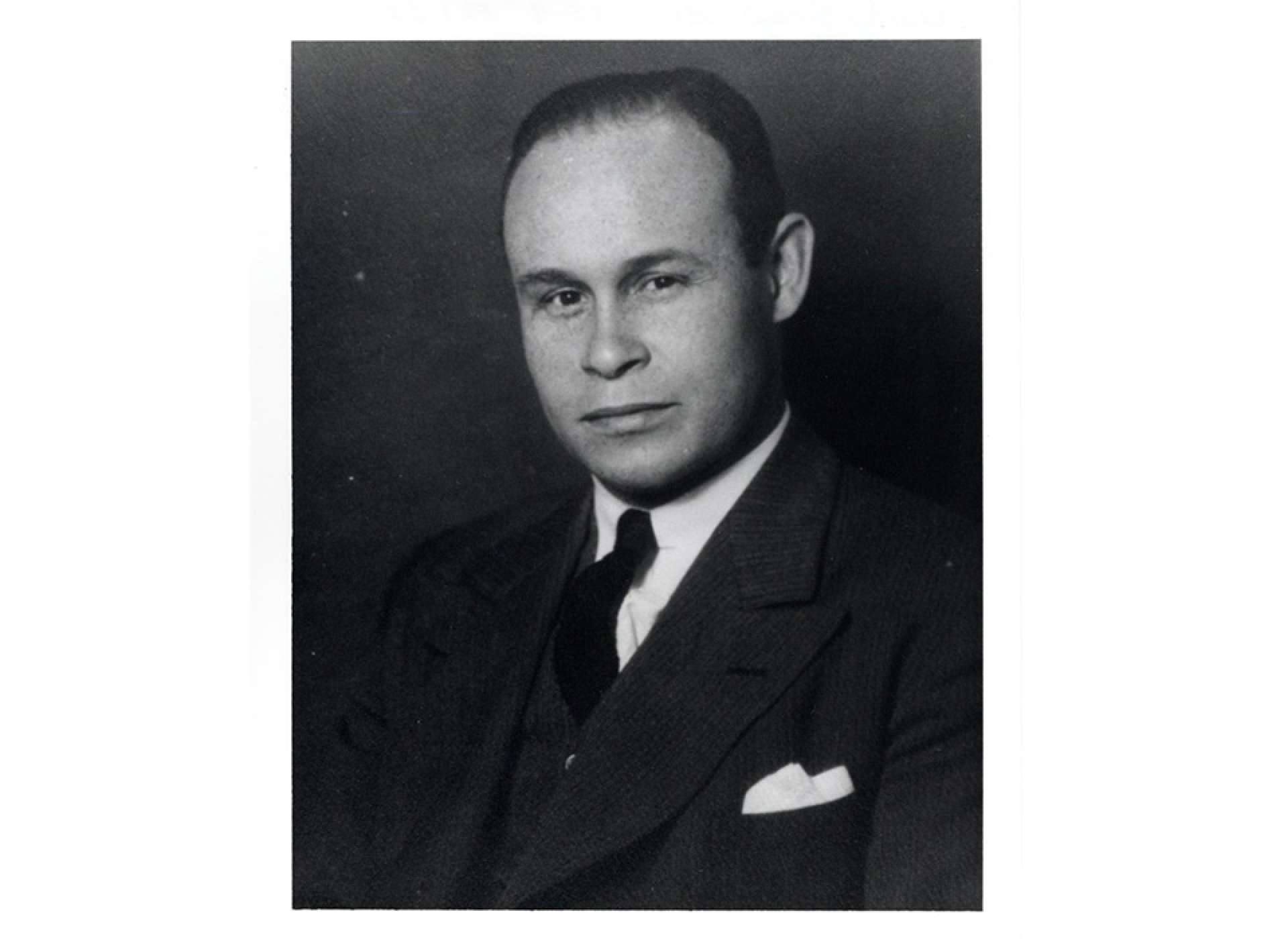
A portrait of Charles Drew in 1949; Howard University, Charles R. Drew Papers.
Medical scientists had discovered in the 1930s that blood plasma could be transfused into patients without matching blood types, and that it could be an effective treatment for shock following trauma. Research in the US and Europe had shown that with anticoagulants and preservatives, blood could be stored for use. Until then transfusions of blood were given directly from donor to recipient. The first decades of the 1900s had revealed a variety of blood types and groups, and that there needed to be a match between donor and recipient to avoid a deadly reaction. A problem with banked whole blood was that it had to be constantly refrigerated, and so was very difficult to transport. In addition, whole blood must be given intravenously, while plasma can be given intramuscularly or intravenously, and in large doses.
While not the first to develop blood plasma for the treatment for shock, Charles Drew had completed his dissertation for a doctorate in Medical Science at Columbia University in 1940. He had set up a blood bank at NY’s Presbyterian Hospital, in 1939, and that, with his studies on treating shock, fluid balance, blood chemistry and preservation, and transfusion were the basis for his dissertation. They also formed the reason for his appointment for the Blood for Britain Program. When Blood for Britain was completed in January of 1941, he was asked to lead the National Blood Bank.
With the wars in Europe and China raging, it became clear that the US would soon be involved, and the National Research Council and the American Red Cross planned a national blood donation and banking system that would include the production of large numbers of kits of dried plasma for use on the frontlines by medics and in field hospitals. Drew was the obvious choice for the role, and he quickly set up a system of uniform procedures and standards for collecting blood and processing blood plasma at the participating hospitals. He developed mobile blood donation stations, later called "bloodmobiles." He also developed a system to dry and package plasma, and kits to reconstitute it and infuse or transfuse it. The project was going along well under the direction of Charles Drew.
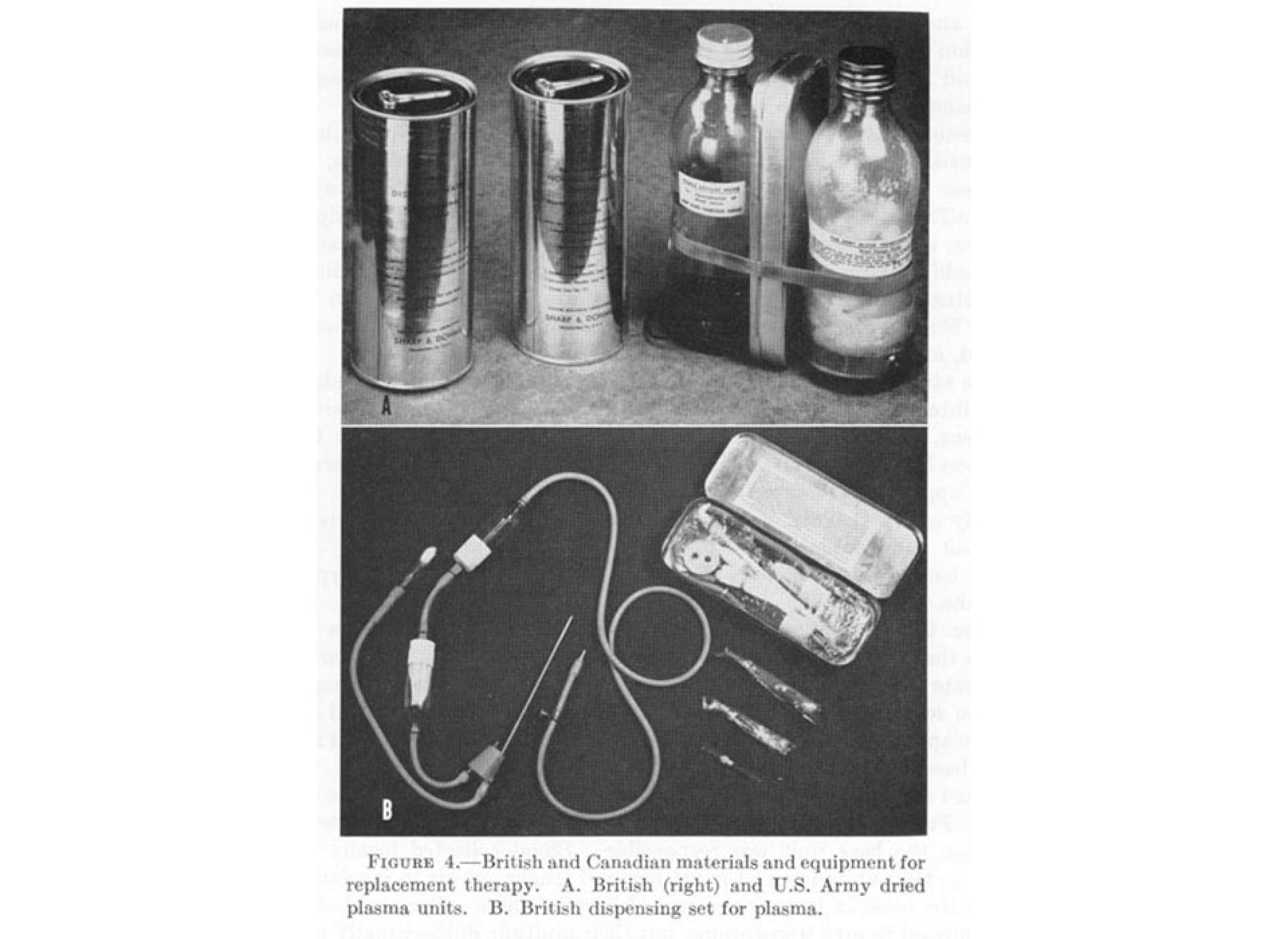
WWII era plasma medical kits; US Army Medical Dept Office of Medical History, BLOOD PROGRAM IN WORLD WAR II.
But then arose the problem. The Red Cross in April of 1941 decided to accept and follow the War Department’s policy of segregating blood. The official policy was “For reasons which are not biologically convincing but which are commonly recognized as psychologically important in America, it is not deemed advisable to collect and mix Caucasian and Negro blood indiscriminately for later administration to members of the military forces.”
Charles Drew was African American. Born in Washington DC, he attended Amherst College on a football scholarship, and proved himself as great a student as he was an athlete. Following graduation he taught science and coached football at Morgan College to save money for medical school. He failed to meet the entrance requirements at Howard, having 6 hours of English instead of 8, and so entered medical school at McGill University in Quebec, where he studied alongside Caucasian students and learned to treat all patients. After receiving his MD in 1933 (second in a class of 137), he completed his residency at Montreal General Hospital, where he studied treatment of shock and resuscitation. On completion of his residency he wanted to return to the US and receive training in surgery. Because of his race, there were few options available, and he took a position at the Freedman Hospital in DC.
After a year back in DC he added to his duties at Freedman a position as Instructor in pathology at Howard. Quickly advancing, he became assistant surgeon at Freedman in 1937. In 1938 Drew received a Rockefeller Fellowship to work at NY Presbyterian, where he eventually completed his dissertation.
Charles Drew made his decision in April 1941, resigning from his post with the National Blood Bank, but making no public statement about it at the time.
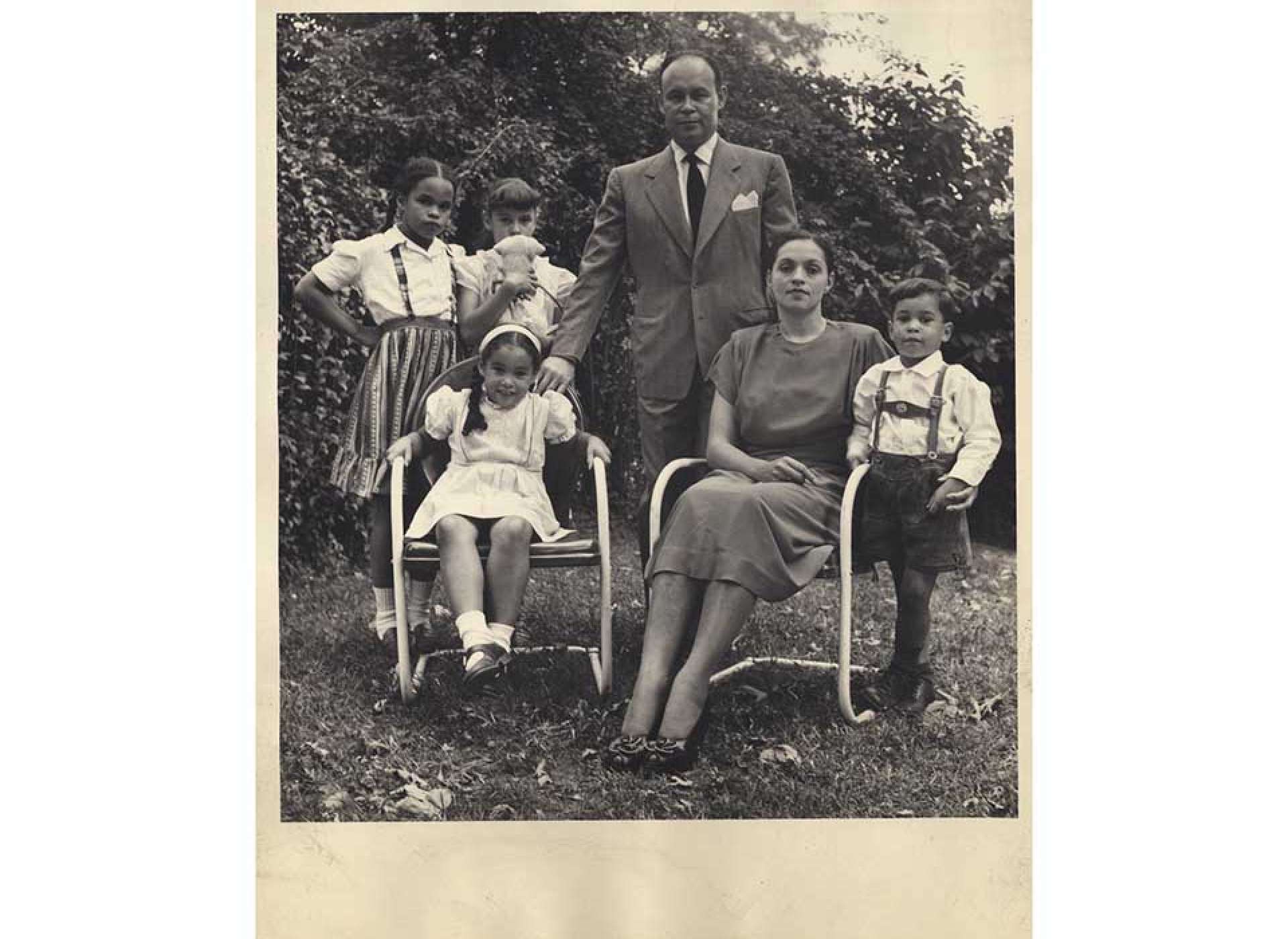
Charles Drew with his wife Lenore and their children; Howard University, Charles R. Drew Papers.
In 1944 Drew wrote a letter to the director of the federal Labor Standards Association about the segregation of blood by the National Blood Bank. In it he said, “I think the Army made a grievous mistake, a stupid error in first issuing an order to the effect that blood for the Army should not be received from Negroes. It was a bad mistake for 3 reasons: (1) No official department of the Federal Government should willfully humiliate its citizens; (2) There is no scientific basis for the order; and (3) They need the blood.”
Charles Drew had always said that his main mission was to train and mentor medical students and surgical residents, and raise standards in black medical education. For the next 9 years he worked hard at that mission, and also campaigned against the exclusion of black physicians from local medical societies, medical specialty organizations, and the American Medical Association. He himself was the first African American to be appointed an examiner for the American Board of Surgery, and was elected to the International College of Surgeons in 1946.
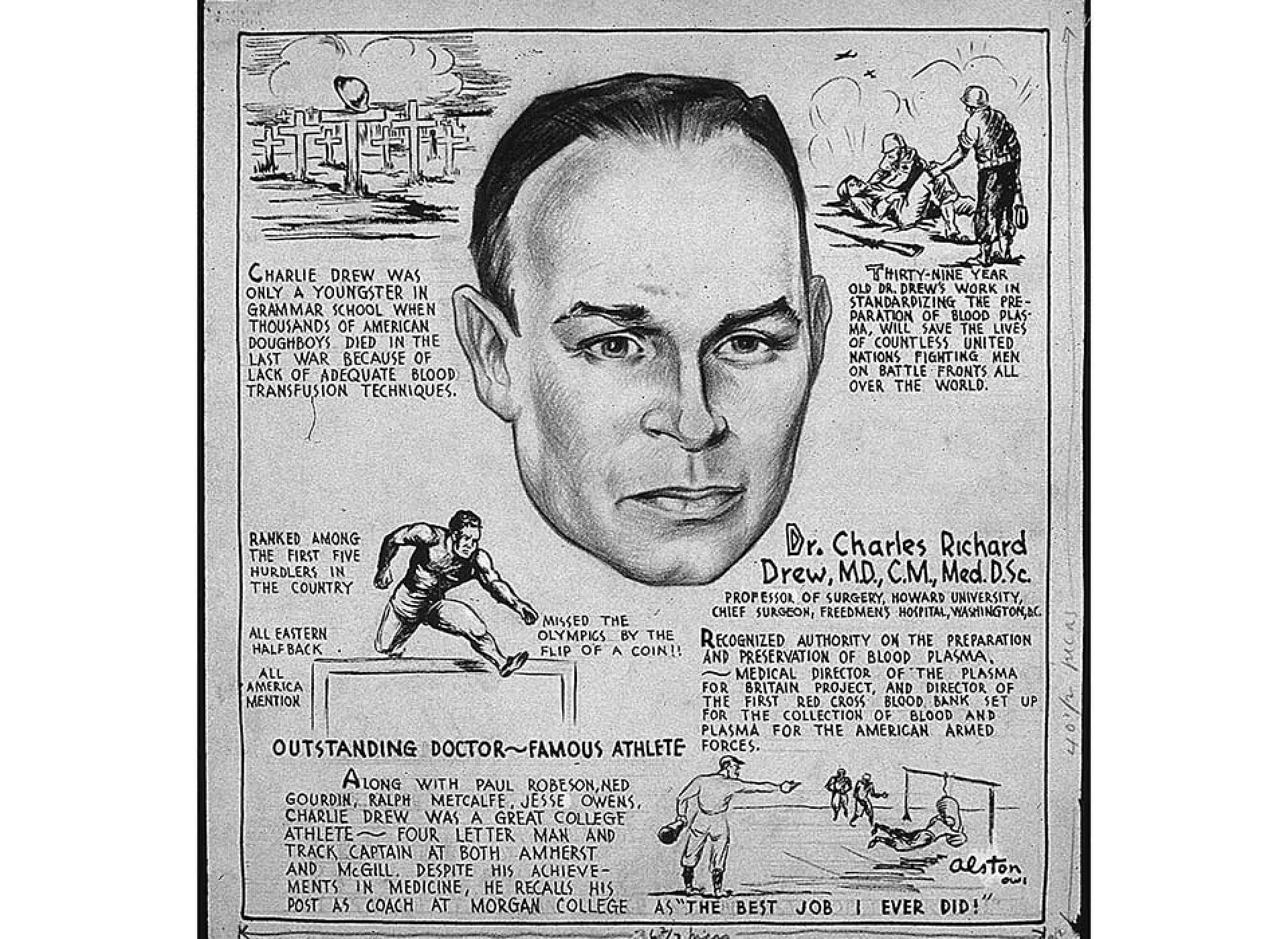
A summary of the life of Charles Drew by artist Charles Alston, 1943; NARA 535693.
In 1948 Drew’s first class of surgical residents passed the certification examination of the American Board of Surgery, two receiving top marks. Between 1941 and 1950, Drew trained more than half of the African American surgeons certified (eight of the total number); another 14 who passed later had received part of their training with him. Drew often paid out his own pocket for his students to attend conferences and present their research.
On April 1st, 1950, Charles Drew was on his way to a clinical conference, driving with 3 colleagues from DC to Tuskegee, AL. There was an accident near Burlington, NC while he was driving. His three colleagues survived, one with serious injuries. Charles Drew was very badly injured. The nearby hospital and its doctors did they best they could, but with no blood bank onsite, they could not save his life.
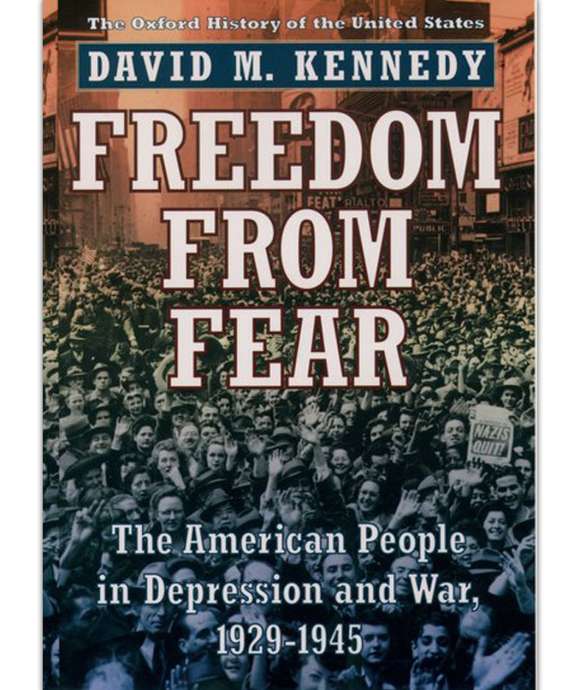
Freedom from Fear
Support the continuing educational mission of The National WWII Museum by shopping our Museum Store book selection.
Rob Wallace
Rob runs teacher workshops and develops curriculum, including Real World Science, funded by The Northrop Grumman Foundation.
Cite this article:
MLA Citation:
APA Citation:
Chicago Style Citation:
